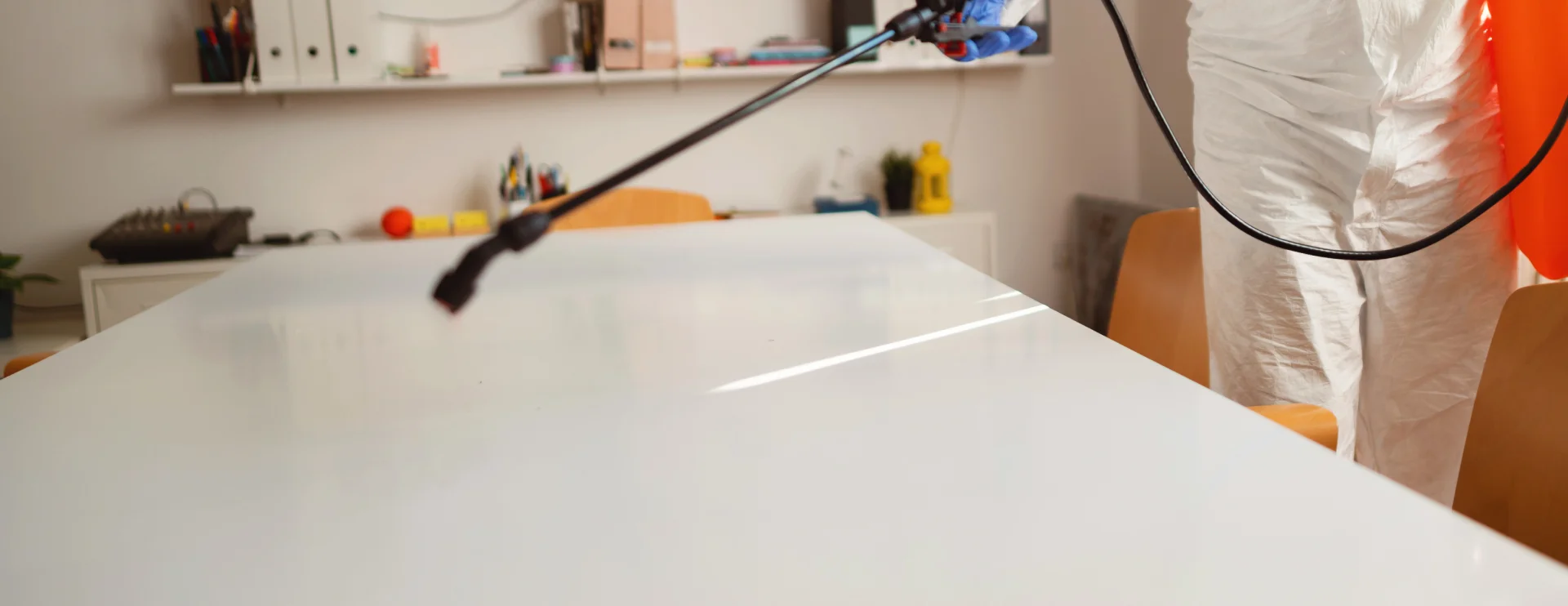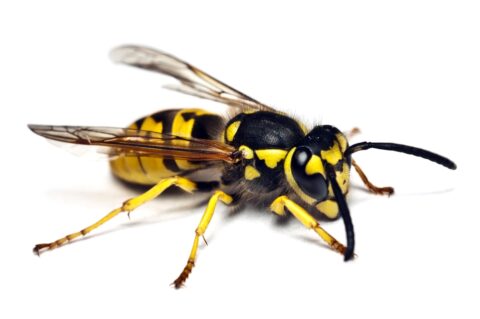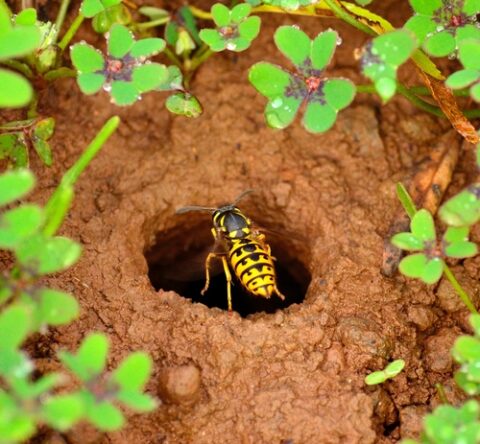Ground hornets, also known as cicada killer wasps or ground-dwelling wasps, can appear quite intimidating due to their large size and aggressive behavior when defending their nests. Here are some key points to consider.
Cicada killers are generally not aggressive towards humans, but they may sting in self-defense if their nest is disturbed or if they come into contact with a person. However, these encounters are rare. Unlike other stinging insects, these wasps don’t even have nest-protecting instincts. Male cicada killer wasps don’t even have stingers. When it comes to humans, they simply buzz around your head, and because of their size, it can be tough to remember they are not aggressive.
Cicada killers, or ground hornets, rank among the U.S.’s largest digger wasps. These insects can reach two inches long. Their bodies are black with yellow markings reminiscent of yellow jackets. Unlike many stinging insects, ground hornets typically live alone as solitary insects rather than ones that live in groups, such as social insects. This means that they won’t attack in swarms. However, when nests form, they may endanger your home or workplace. The threat is particularly severe for individuals allergic to their stings. Despite their solitary nature, these wasps can pose significant risks if they are near human habitation.
Ground hornets can nest nearly anywhere, from flower beds to backyards to the dirt along sidewalks and more. Once they start burrowing, they can create nesting sites that are up to 1 ½ feet below the surface of the ground.
INFESTATIONS
Ground hornets, or cicada killers, are found in various regions across the United States. They typically live in:
1. Eastern states: From New England to Florida
2. Midwest: Throughout the central U.S.
3. Southern states: Across the entire South
4. Some western areas: Parts of Texas, Oklahoma, and Kansas
They prefer:
– Sandy or loose soil for nesting
– Sunny, well-drained areas
– Lawns, gardens, and parks
– Areas near trees or structures
One thing to look for is sizeable holes in your yard or garden. These holes are usually around an inch and a half in diameter and if the hornets have dug burrows close to one another, you’ll find several of them.
Another telltale sign is large piles of dirt in the shape of a horseshoe. These mark the entrance to a burrow and are usually found in sunny areas.
PREVENTION
Ground hornets like to nest in loose soil, so keeping your yard properly watered is one way to prevent them from burrowing in it. Also, since they prefer building their homes in sunny spots, planting vegetation for shade and laying mulch can help steer them away from the area.
Though generally innocuous, ground hornets can sting when threatened, which means you should never attempt to eliminate a nest without the help of a professional. If you are brave enough to persist in treating these insects yourself here are some DIY steps that should be effective for small infestations.
To get rid of ground hornets, you can try the following methods:
1. Locate the nest entrance, typically a small hole in the ground.
2. Treat the nest at night when hornets are less active:
o Use an insecticide dust or spray labeled for ground hornets
o Apply the product directly into and around the nest entrance
3. For a non-chemical approach, pour boiling water into the nest entrance.
4. Set up hornet traps nearby to reduce the population.
5. Remove attractants like open garbage or fallen fruit from the area.
6. As a preventive measure, consider treating your lawn for grubs that attract hornets.
7. For severe infestations or if you’re allergic, hire a professional pest control service.
Always exercise caution when dealing with hornets, as their stings can be aggressive and painful. Wear protective clothing if attempting removal yourself.
Ground hornets do eat cicadas, which is exactly why they’re also called cicada killers. Here’s a breakdown:
1. Diet: Adult female cicada killers hunt and paralyze cicadas.
2. Purpose: The cicadas serve as food for their larvae.
3. Process:
– Females sting and paralyze cicadas
– They carry cicadas back to their burrows
– Eggs are laid on the paralyzed cicadas
– Larvae feed on the living but immobilized cicadas
4. Name origin: This specific behavior of hunting cicadas led to the “cicada killer” moniker.
5. Timing: Their activity often coincides with cicada emergence.
6. Specialization: While they may consume other insects, cicadas are their primary prey.
This hunting behavior is crucial for the wasps’ reproductive cycle, directly linking their common name to their ecological role. Their distribution can vary based on local conditions and cicada populations. Should you need help with a Ground Hornet infestation call the wasp experts at Buffalo Exterminating.



